
 |
|
|||||||
 |
|
|
Thread Tools | Search this Thread | Display Modes |
|
|
|
|
#1 |
|
Member
Join Date: Mar 2005
Location: USA Georgia
Posts: 1,599
|
Recent acquisition and one of my favorite pieces. A seven wave blade 20 3/4 inches long showing twisted lamination on the center and bounded by twisted wire of gold & silver.
The asang-asang (metal band on the guard) is made of swasa, The grip area of the handle has a traditional cord wrap lacquered black (recent replacement, but traditional style) and a swasa ferrule with dark patina. Ivory Kakatua / jungayyan pommel has a honey color. Very unusual to find these rare delicate pommels undamaged. Dark hardwood scabbard with silver panels on the top section showing some floral designs. Another unusual feature is these silver panels are on BOTH sides. Usually only on one side. The lower part of the scabbard has 3 silver bands with similar designs as the upper panels. Sulu late 1800. 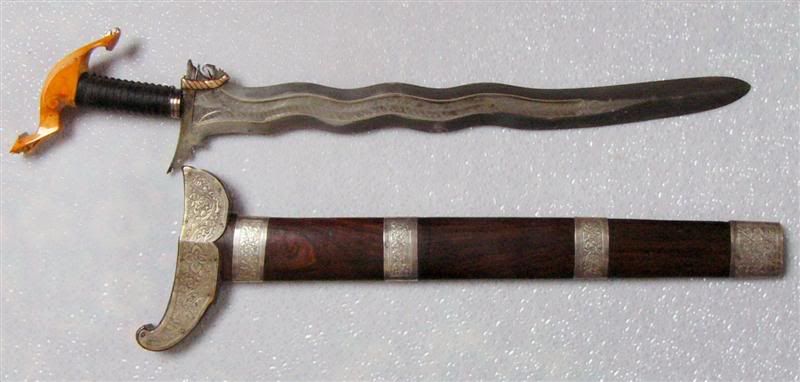 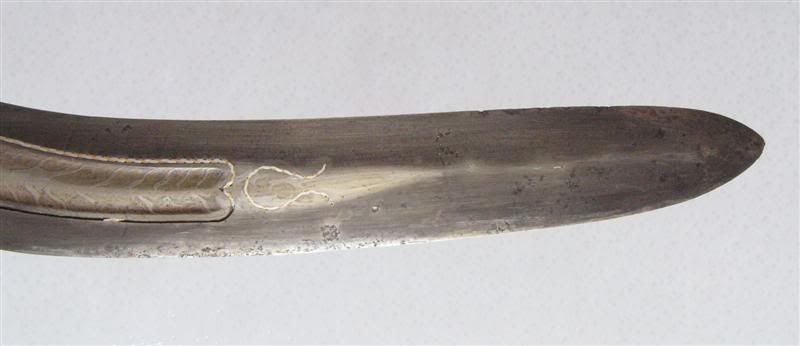  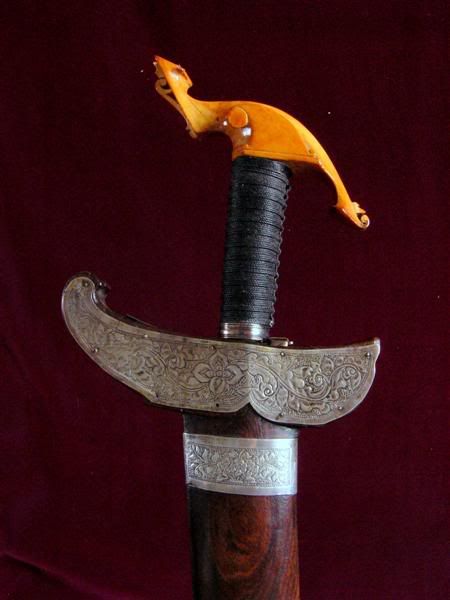 And the panel on the other side 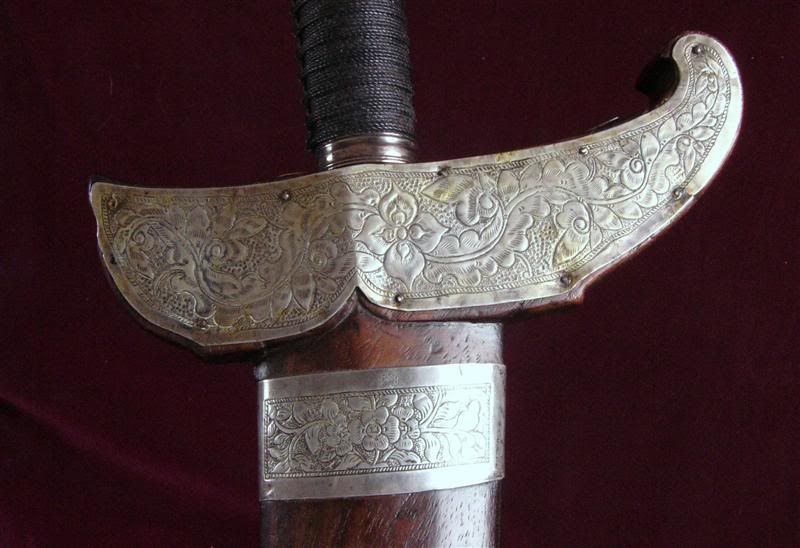 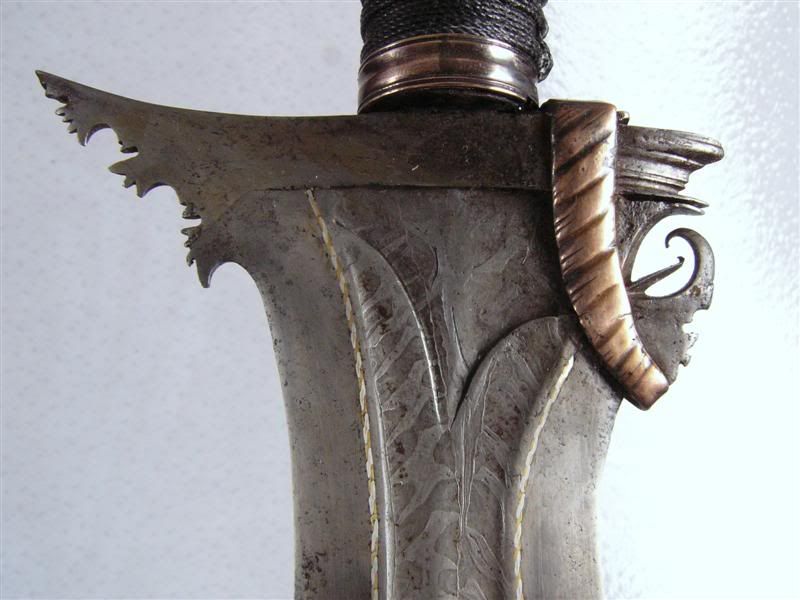 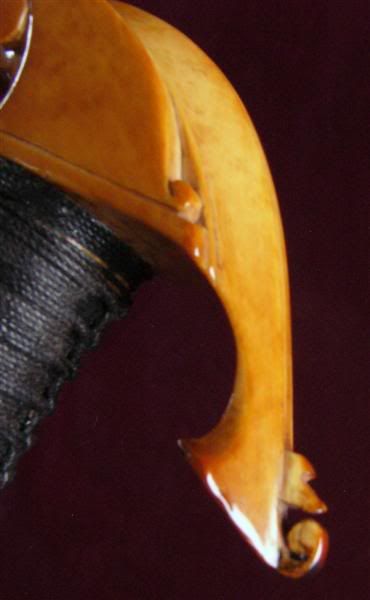 
Last edited by Bill Marsh; 8th March 2008 at 01:28 AM. |
|
|

|
|
|
#2 |
|
EAAF Staff
Join Date: Feb 2005
Location: Centerville, Kansas
Posts: 2,196
|
Bill, Please post pictures.
|
|
|

|
|
|
#3 | |
|
Member
Join Date: Mar 2005
Location: USA Georgia
Posts: 1,599
|
Quote:
   Sorry, got interrupted. Give me a minute. Ok. Last edited by Bill Marsh; 8th March 2008 at 01:28 AM. |
|
|
|

|
|
|
#4 |
|
Member
Join Date: Dec 2004
Location: Kernersville, NC, USA
Posts: 793
|
Simply wonderful.
Steve |
|
|

|
|
|
#5 |
|
Member
Join Date: Dec 2004
Location: Italia
Posts: 1,243
|
When a man is so lucky to see something wonderful like this piece is, words are useless

|
|
|

|
|
|
#6 | |
|
Member
Join Date: Mar 2005
Location: USA Georgia
Posts: 1,599
|
Quote:
|
|
|
|

|
|
|
#7 |
|
Member
Join Date: Oct 2007
Posts: 1,577
|
Hi Bill,
I am interested in inlaying techniques therefore would it be possible to post a close up of the blade where the wire ends and the inlay groove is empty. Many thanks. Regards, Norman. |
|
|

|
|
|
#8 |
|
Member
Join Date: Dec 2004
Location: Greenville, NC
Posts: 1,855
|
Now this is gor-geeeeez!
|
|
|

|
|
|
#9 |
|
EAAF Staff
Join Date: Dec 2004
Location: Louisville, KY
Posts: 7,139
|
Impressive! Is this a former Cato piece?
Norman - if you are comming to Timonium, I will be addressing inlay in my presentation.... |
|
|

|
|
|
#10 |
|
Member
Join Date: Feb 2006
Posts: 327
|
Jose: As far as i know, and i could be wrong, i don't think Bob had any twist-cores in his collection............Dave.
|
|
|

|
|
|
#11 |
|
Member
Join Date: Oct 2007
Posts: 2,818
|
Thanks for the email Bill, I have done image comparisons and I must say that yours is an extraordinary example.
I am curious at to what the rest of the detail of the handle looks like? regards Gav |
|
|

|
|
|
#12 | |
|
Member
Join Date: Mar 2005
Location: USA Georgia
Posts: 1,599
|
Quote:
Norman, I will be happy to do this. I have a microscope and will take some real closeups. I tried with the camera, but was not happy with the results. Will get some images this week. |
|
|
|

|
|
|
#13 |
|
Member
Join Date: Oct 2007
Posts: 1,577
|
Hi Bill, am looking forward to your photos, many thanks for your time and effort.
Regards, Norman. |
|
|

|
|
|
#14 |
|
Member
Join Date: Mar 2005
Location: USA Georgia
Posts: 1,599
|
Hi Norman,
Not being certain of what you want to see, I have posted a few macro and micro images. First the macro 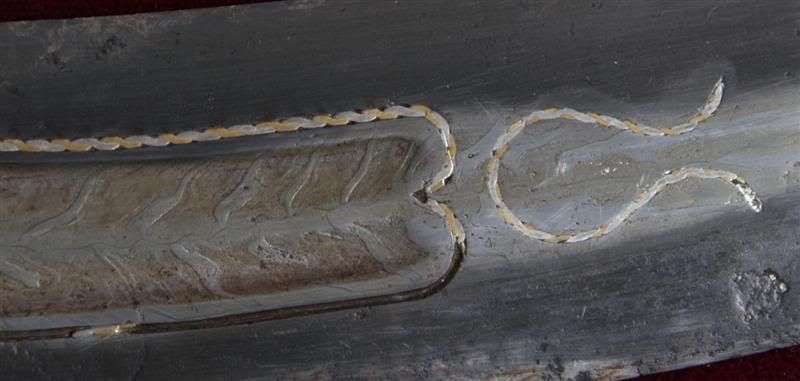 Moving in closer 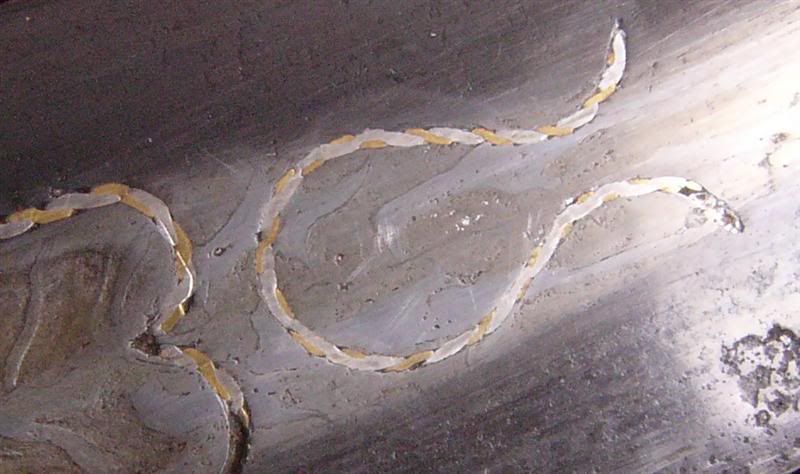 Still Closer  Into Micro, please excuse the color shift, I may need a different filter on my light source. Here is a 10x of the place where the two lines join at a point. 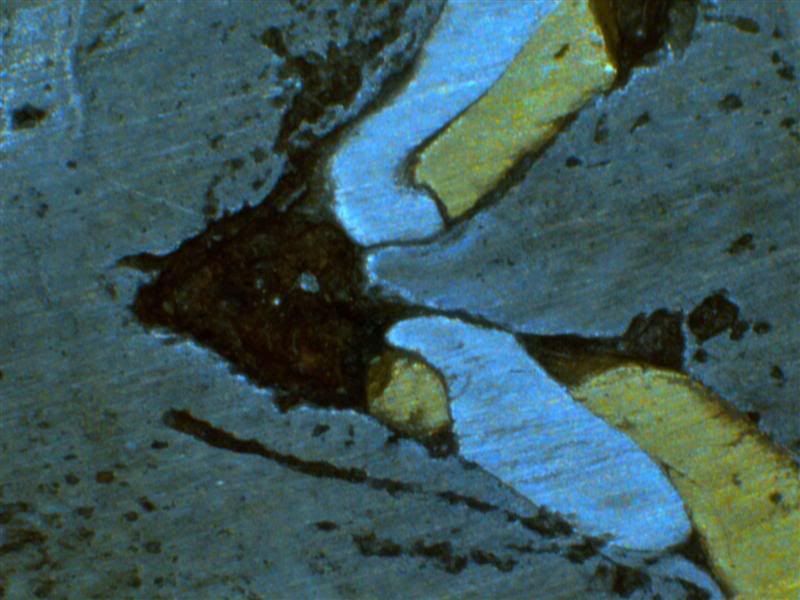 Micro of the gold and silver wire. 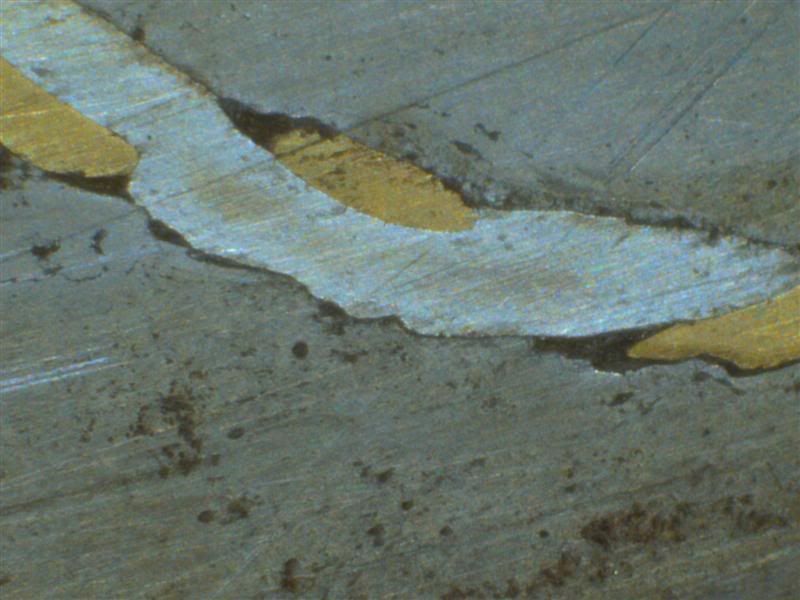 Micro where the wire has come loose showing the channel. If you want more showing the channel, I can oblige. 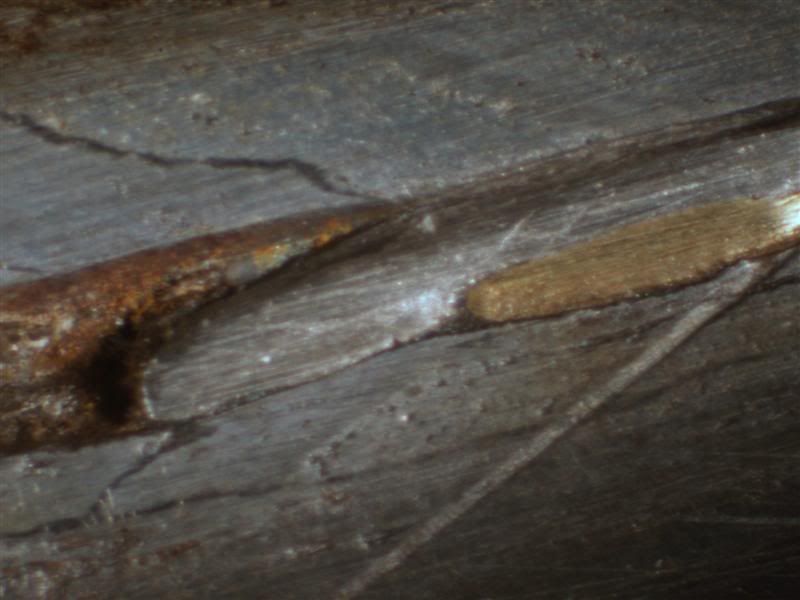 Micro of the wire. 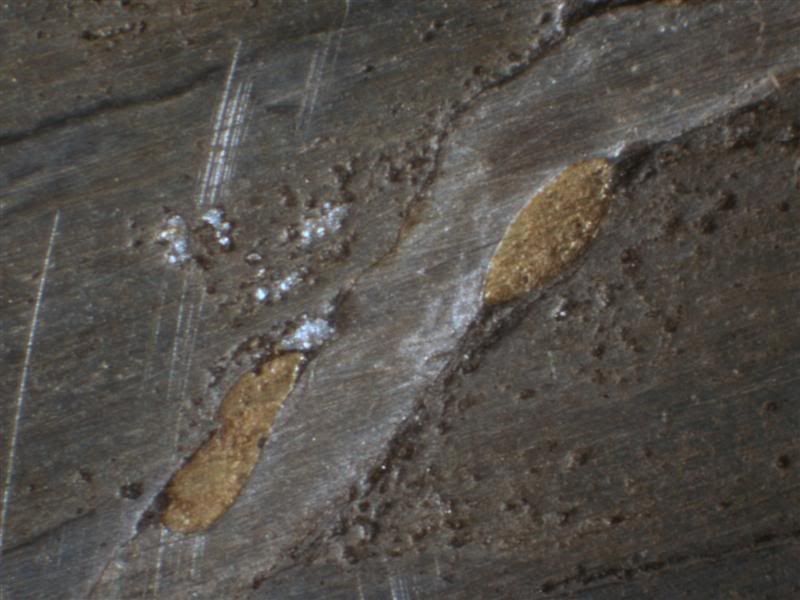
|
|
|

|
|
|
#15 |
|
Member
Join Date: Oct 2007
Posts: 1,577
|
Hi Bill,
Many thanks for the photos, I've been experimenting with inlaying copper into steel and what I wanted to see was how the grooves were prepared for inlaying. On European weapons it would appear the groove is undercut using a special tool forming an inverted T so that when the inlay is forced into the space it expands into the T thereby forming an anchor for the metal inlay. From what I can see this is not the case in this blade and internal 'roughness' of the groove is sufficient to grip the inlay if it is laid in with enough force. This is how I have done it and it seems to work very well. Is there any evidence of an adhesive in the groove? I was thinking of possibly a similar substance to that used in India for Tulwar hilts. I also wanted to see how smooth the edges of the grooves were as this is a difficult thing to achieve with hand tools although only really apparent upon close inspection and not terribly noticeable at normal viewing distances. Thanks again for the pictures and would you mind if I copied them into my photo file for future reference? Regards, Norman. |
|
|

|
|
|
#16 |
|
Member
Join Date: Dec 2004
Posts: 977
|
[QUOTE=Bill MarshIvory Kakatua / jungayyan pommel has a honey color. Very unusual to find these rare delicate pommels undamaged.
QUOTE] Undamaged ones are really hard to find. They do look delicate and vulnerable to the elements, susceptible to chipping and breaking just by handling. DaveS., has several that he takes to events and lets the public handle them. You're a brave man Dave. |
|
|

|
|
|
#17 |
|
Member
Join Date: Mar 2005
Location: USA Georgia
Posts: 1,599
|
I have personally seen DaveS pieces, but they were mounted in a shadowbox with a glass front. DaveS and LonnaS have one of the most awesome collections I have ever handled --- about two years ago. Probably is even better, now!
I cringe when my friends want to handle my pieces, particularly these barongs. The first one has the lower end broken off and smoothed (I think) I may make some shadowboxes also! |
|
|

|
|
|
#18 |
|
Member
Join Date: Feb 2006
Posts: 327
|
Bill: That has to be one of the prettist pieces of ivory i've seen. Basically the same style that one usually sees of this type, but it's the color that makes this one especially good. I've been told that color is just due to normal ageing of the ivory, but we have many old ones that are basically white with just a little bit of color. So who knows. Maybe someone on the forum knows the reason why some hilts turn this color and why some don't
Albert: I guess over the years Lonna and I have been lucky that none of our pieces have ever been dropped. It could be that people are forewarned that in no uncertain terms that they can handle most anything they want, but "you breakee, you fixee", and it will cost you a lot money. The only pieces that have ever been broken have been from my own clumsyness......ooops!!!!!!!!. Can't wait to see your new pieces at the Oregon Knife Show this year.............Dave. |
|
|

|
|
|
#19 | |
|
EAAF Staff
Join Date: Dec 2004
Location: Louisville, KY
Posts: 7,139
|
Quote:
Hope this helps. |
|
|
|

|
|
|
#20 |
|
(deceased)
Join Date: Dec 2004
Location: OKLAHOMA, USA
Posts: 3,138
|
VERY INTERESTING CLOSE UPS OF THE INLAY TECKNIQUE IT KIND OF REMINDS ME OF THE TWISTED WIRE INLAY ON THE MOROCCAN WEDDING NIMCHA BLADES. I HAD NOT SEEN THAT TECKNIQUE USED ON MORO WEAPONS BEFORE
 ANOTHER FACTOR CAUSING IVORY TO TURN COLORS IS CONTACT WITH HUMAN SKIN, THE OILS. ACIDS AND WHATEVER ELSE FOUND IN THE ENVIRONMENT CAN OVER TIME CAUSE A VERY ORANGE COLOR. AFRICAN IVORY BRACELETS ARE A GOOD EXAMPLE ,SOME MORO WEAPONS WITH A MORE SIMPLE IVORY HANDLE ALSO HAVE A GOOD RICH PATINA. I SUSPECT THE REASON FOR LESS PATINA ON THE VERY FANCY DELICATE IVORY POMMELS IS THAT THEY WERE NOT WORN EVERYDAY AND WERE HANDLED VERY CAREFULLY BY THE GRIPS ONLY TO HAVE SURVIVED INTACT ALL THESE YEARS. VERY BEAUTIFUL EXAMPLES ALL , TIME TO MOP THE DROOL OF MY KEYBOARD 
|
|
|

|
 |
|
|